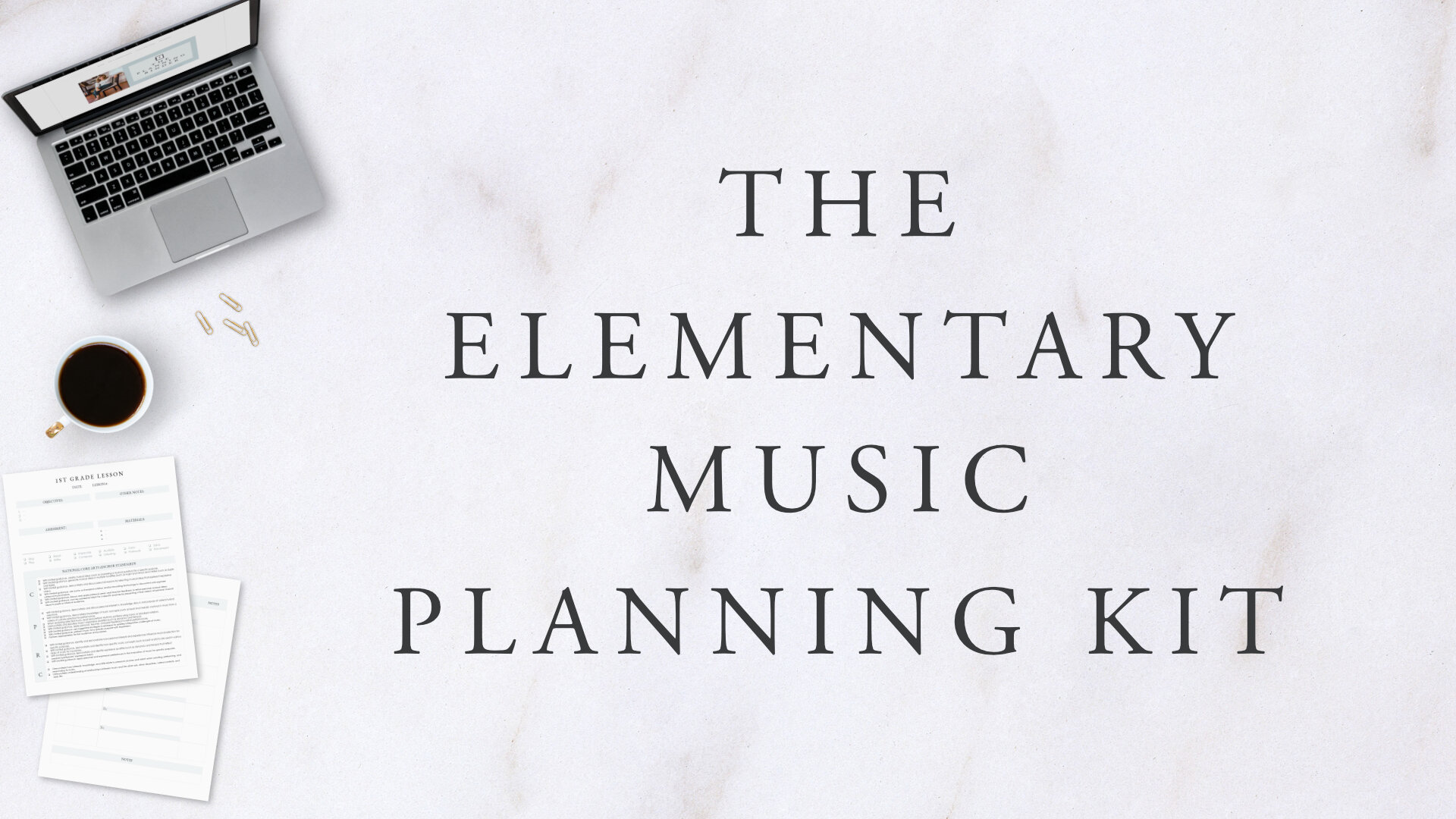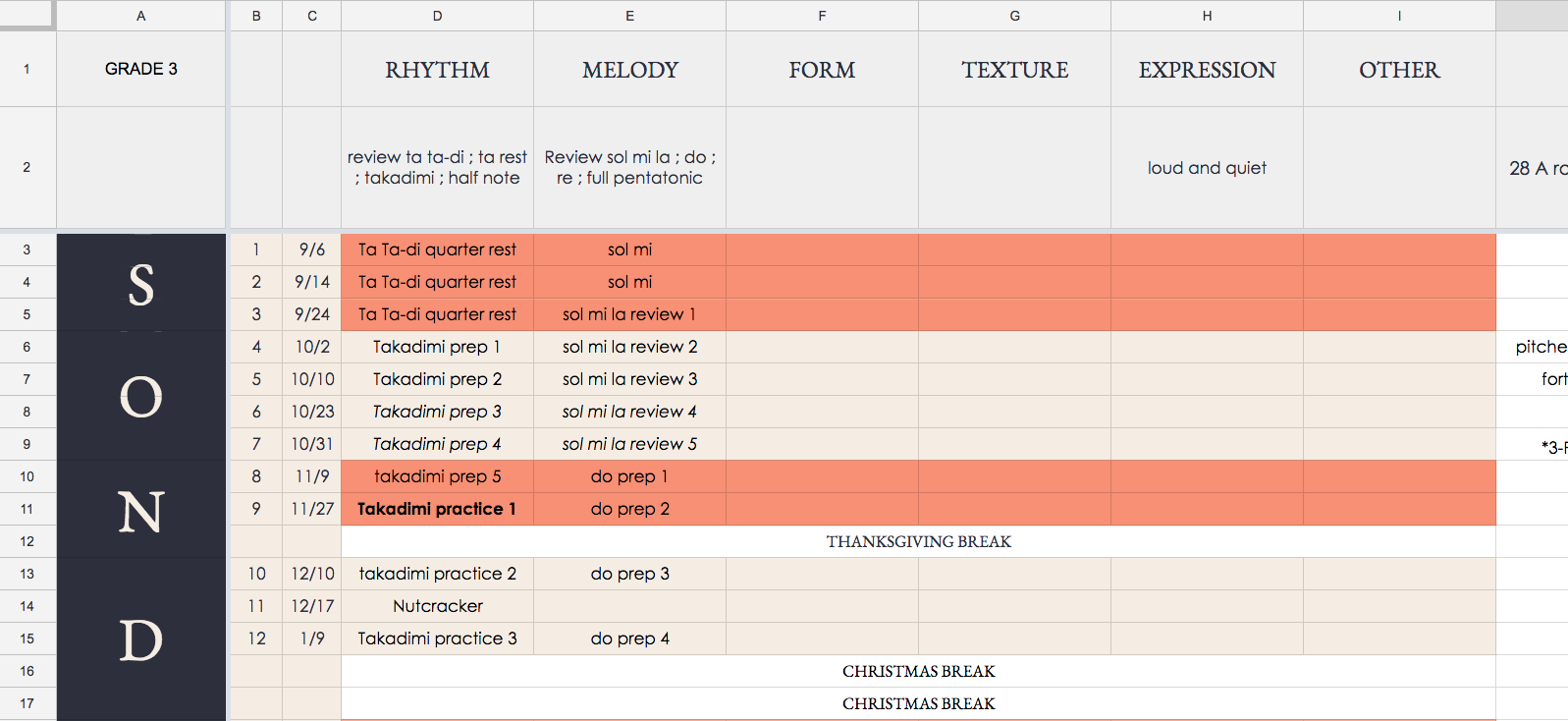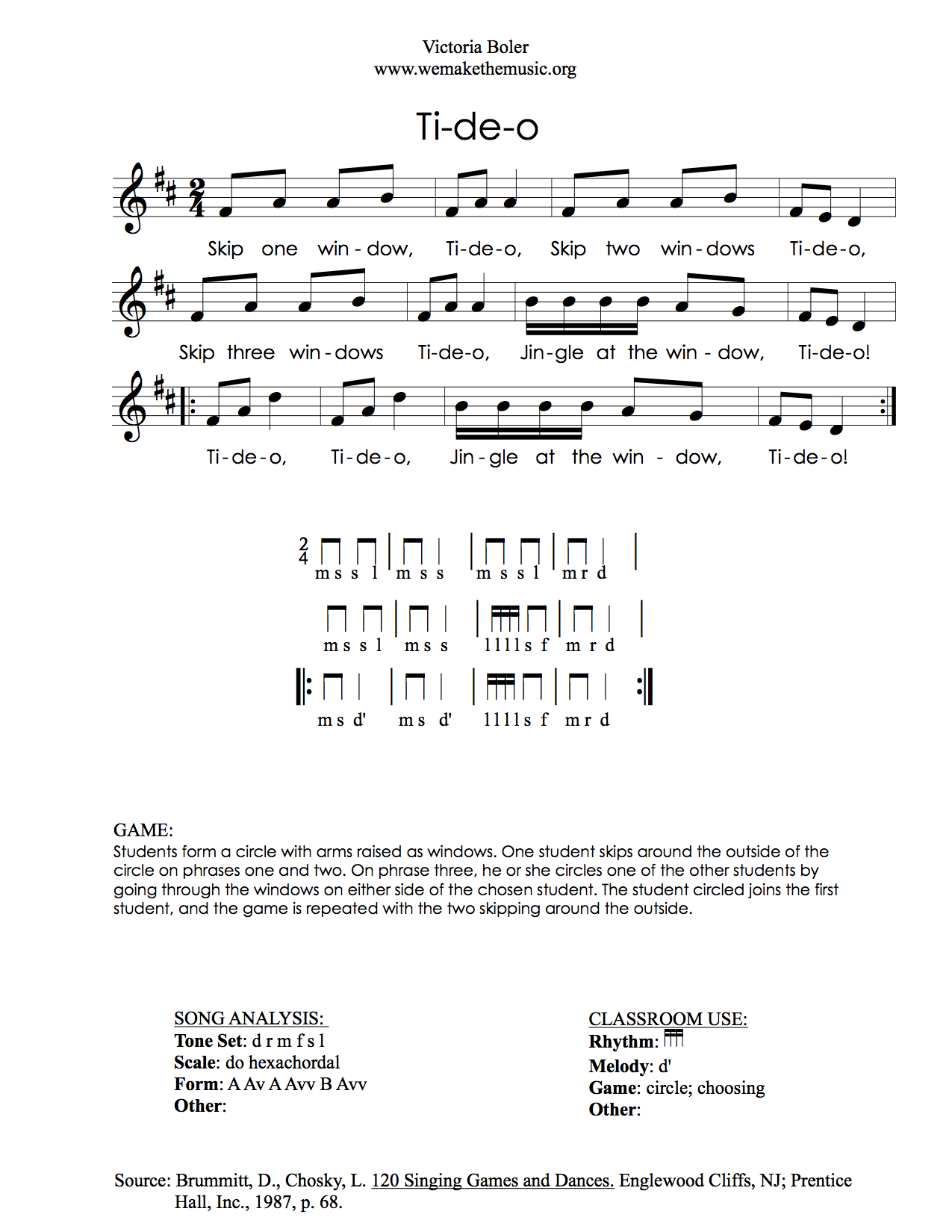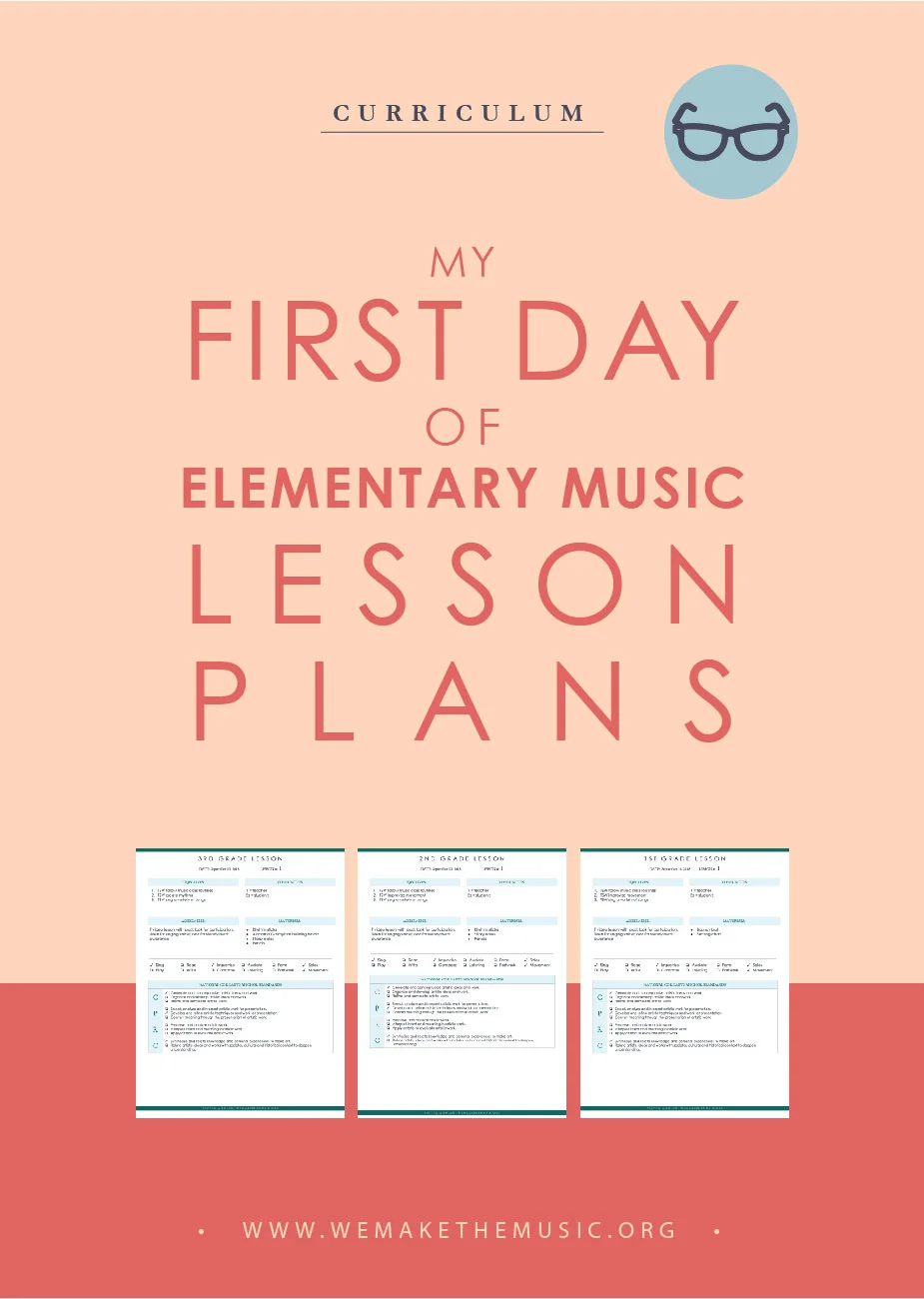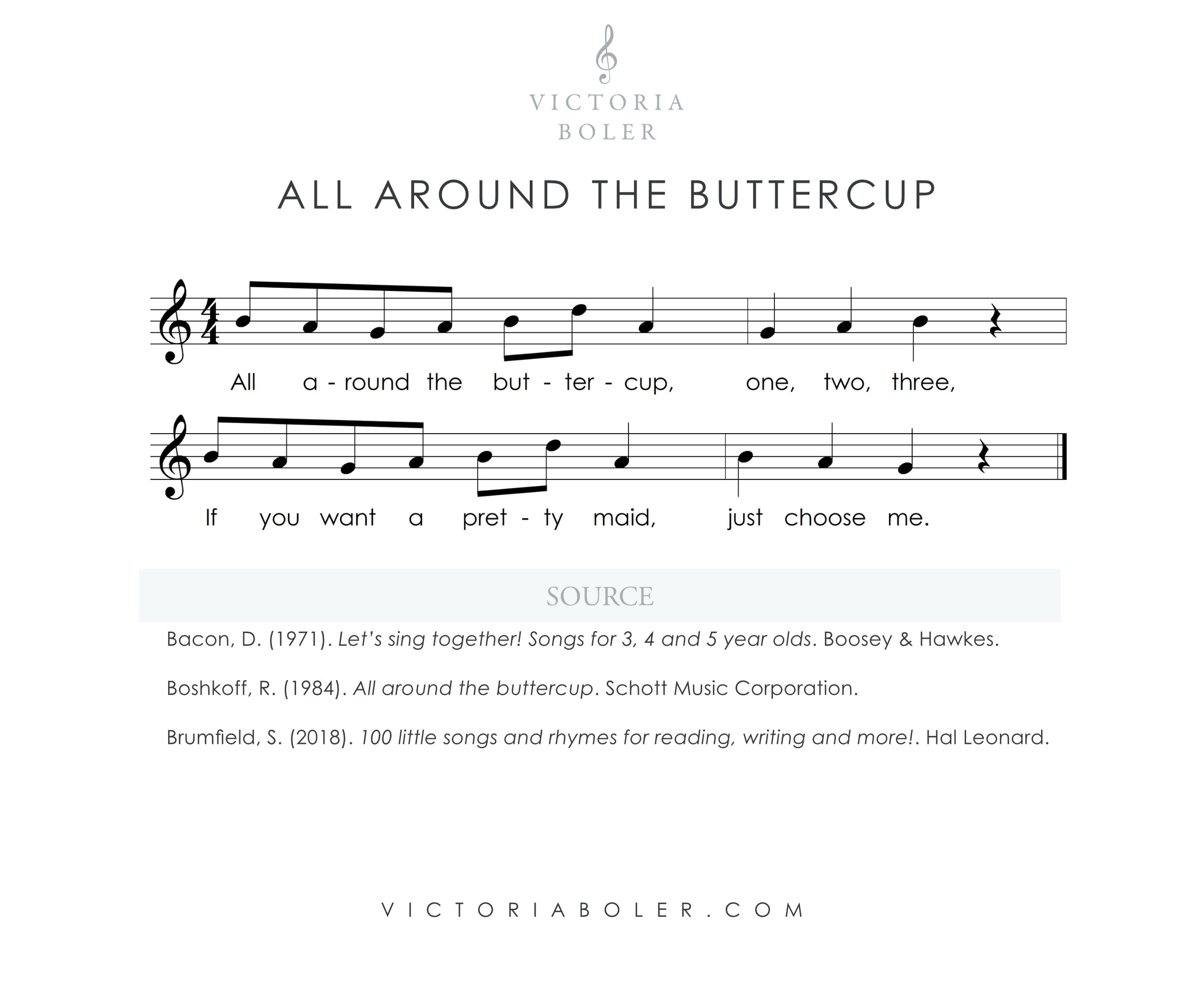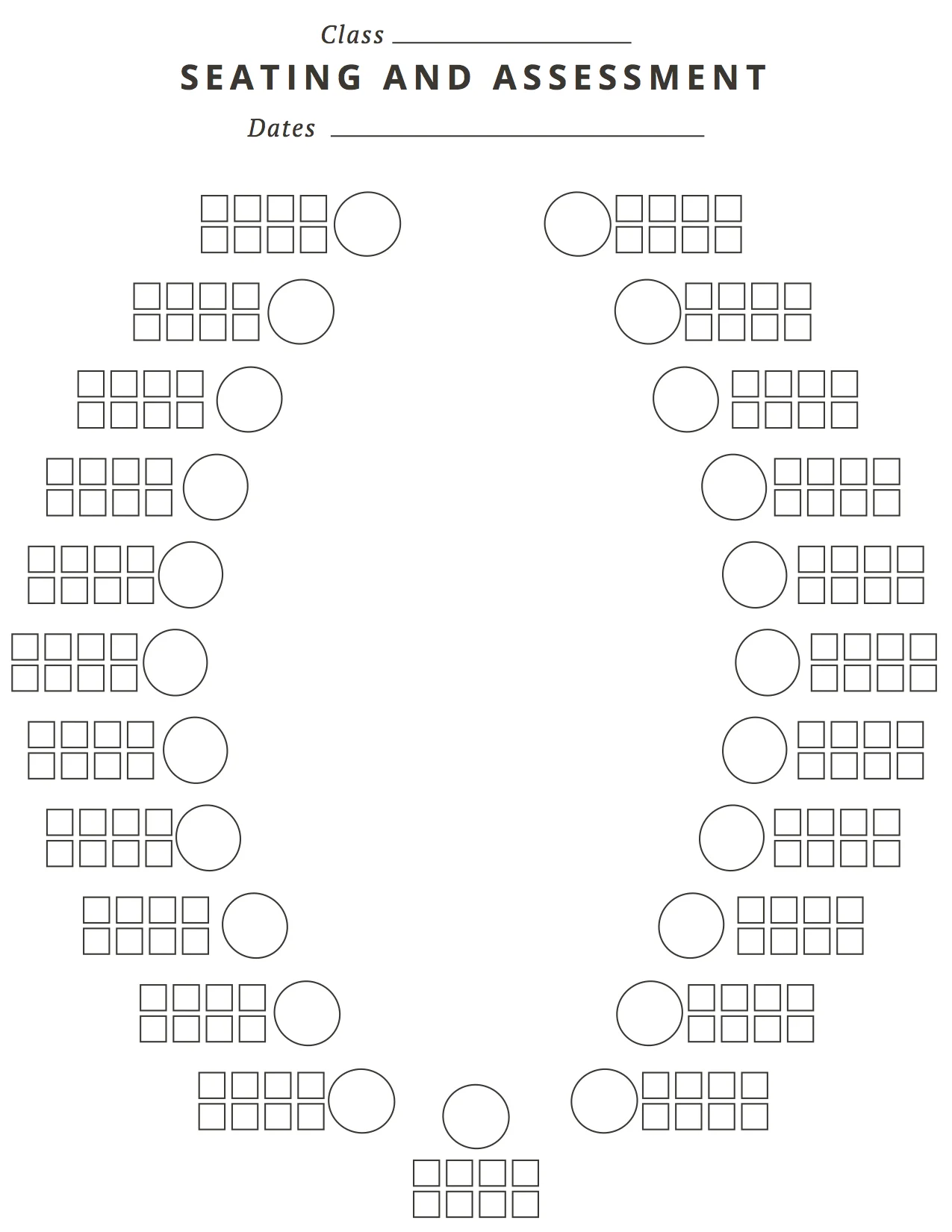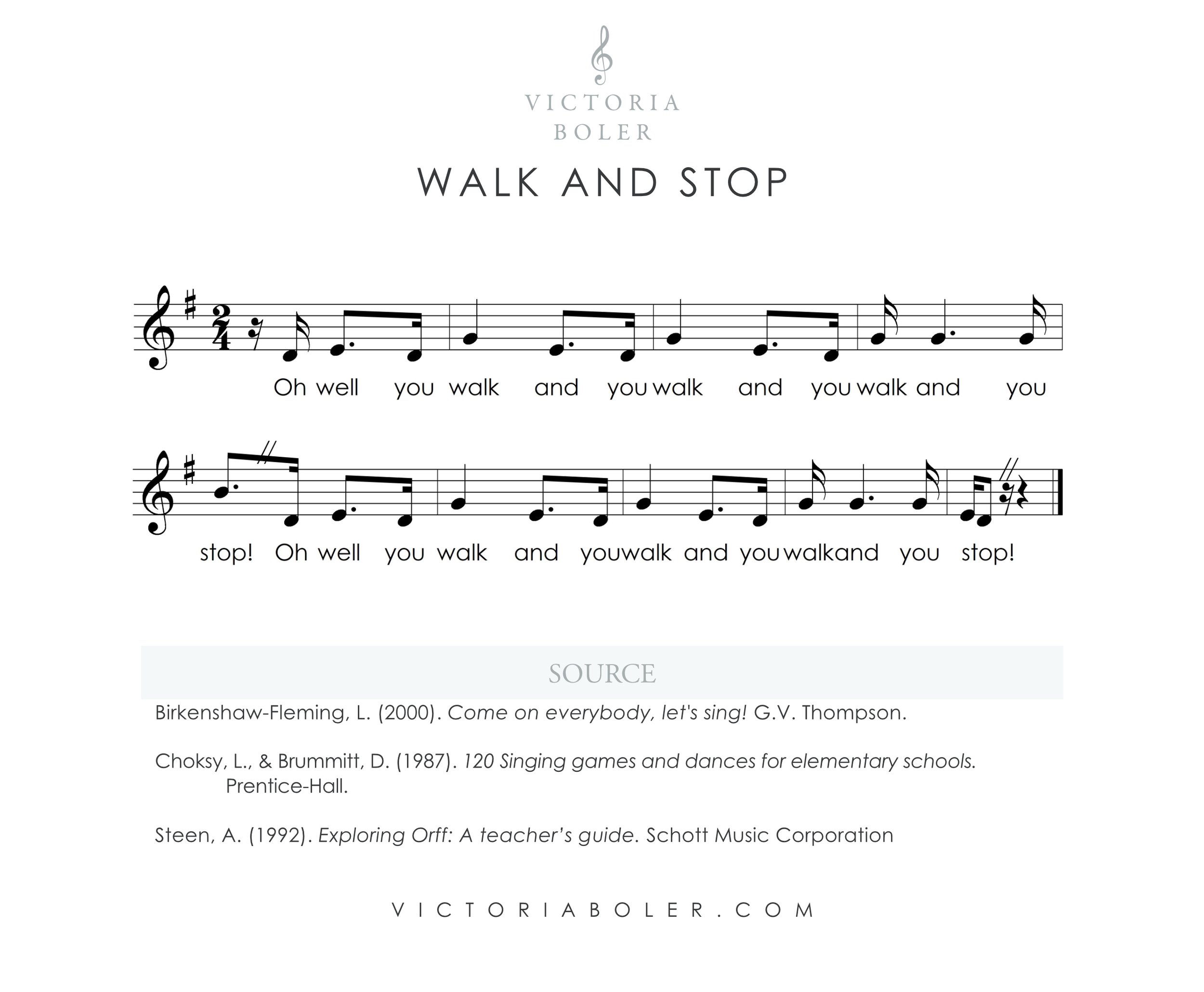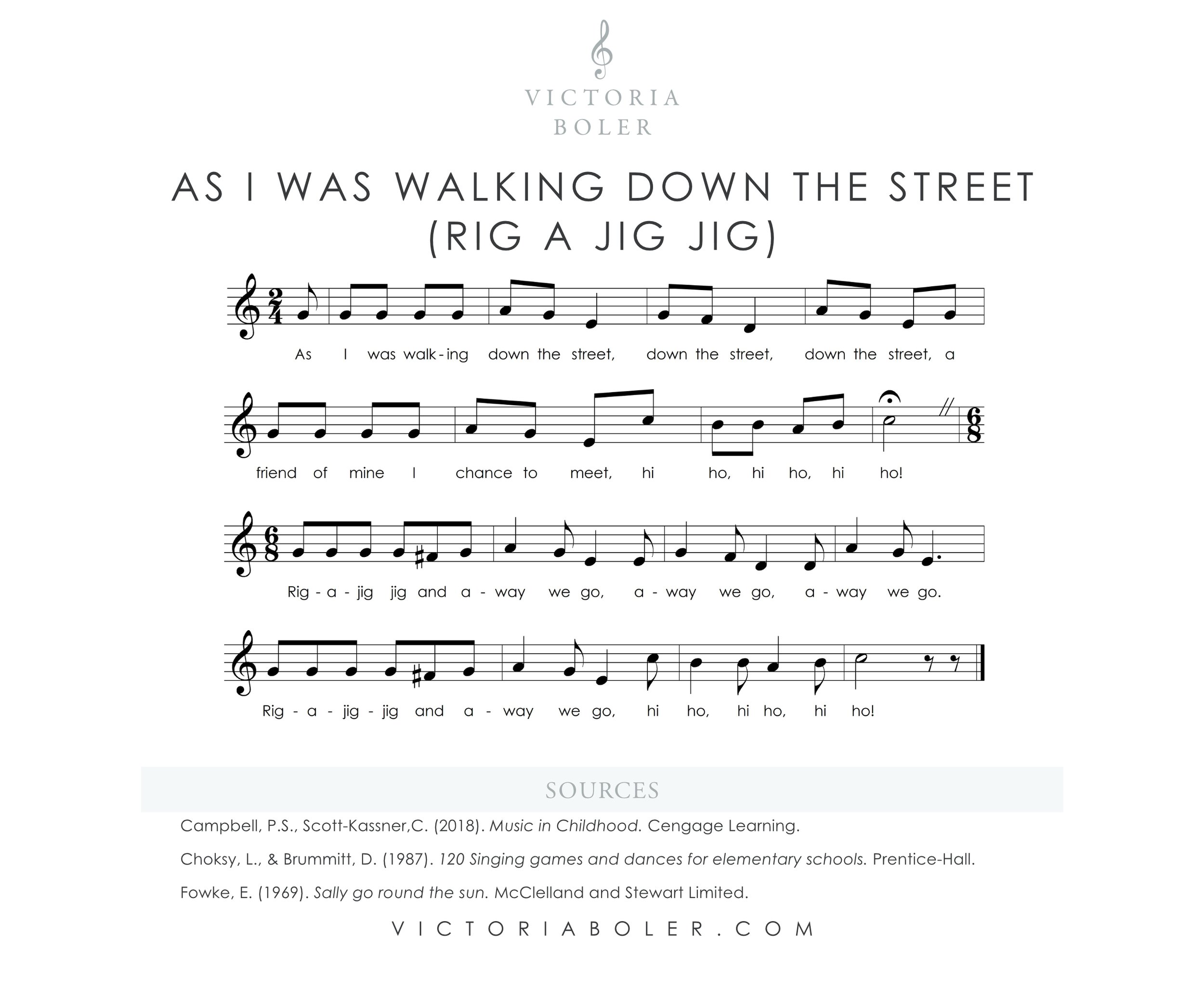In this video I share my 10th lesson with my 3rd graders. I love seeing how other teachers think through their planning process, and thought it would be fun to share my own.
Below the video you’ll find the PDF download of the lesson, as well as the sheet music I used and any other links mentioned.
Enjoy!
Getting Started
There are several documents I use to lesson plan. They save me time while they make sure each activity on the page is intentional, and seamlessly leads into other ideas.
All the templates I use are available to purchase as a part of my Elementary Music Planning Kit.
You can check it out here.
Scope and Sequence:
My scope and sequence keeps me on track throughout the year. This is the document I use to decide what I want to teach, and when I want to teach it.
Concept Plans:
Concept plans are where teachers write down purposeful teaching strategies for specific concepts.
For this lesson I’m using a concept plan for takadimi and do. Both of these are partially completed - I don’t always necessarily have every single activity mapped out when I start a concept.
Below you’ll find my practice activities for takadimi and preparation activities for do.
Takadimi practice activities
Do preparation activities
You can watch these videos or read this blog post to see how I put together my scope and sequence and my concept plans.
My Teaching Situation:
I see my students for 45 minutes on a six day rotation. This is my second full year at this school, and I am still working to “catch up” many grade levels to where I want them to be. In this lesson you’ll that my third graders are working on concepts you might expect from a second grade classroom.
Objectives:
For this lesson I wanted to practice 16th notes and prepare do. To accomplish this, my objectives were to improvise using 16th notes, and aurally identify a note lower than mi.
The Lesson
Warm Up
As students entered the room, they made up a body percussion pattern of their choice. I didn’t care how many levels they used, or what specific rhythms they incorporated. I did, however, watch for a steady beat in their feet as they walked.
Once we entered the room we sang greetings using a sol-mi-do toneset. This was to prepare for our melodic focus for the lesson.
After some tonal work we echoed a few body percussion rhythms, and I included takadimi in these patterns to practice our target rhythm element.
You can watch a video on my elementary warm up routine here, or read this blog post.
New song: I See the Moon
This was a new song my students had never heard. I chose a simple song that highlights the melodic pattern, sol-mi-do.
My students didn’t need to do much with this material, simply hear the song as they copied my hand motions. For the melodic pattern I put my hands on my head for sol, hands on shoulders for mi, and hands on hips for do.
I sang the song again and had students copy my motions as we walked in a circle with a steady beat in their feet. At some point we ended I See the Moon and I went into the song, Apple Tree.
I used the circle formation from I See the Moon. Since students were already walking to a steady beat in a circle they had already set up the formation of the next game.
Main Concentration: Apple Tree
As I was writing this lesson I thought I would use the song, Sorida in this section. However, the more I worked on the lesson outline, I realized Apple Tree would work better as the main concentration material.
My students were in late preparation, which means they were ready to aurally discover a note lower than mi. To discover this note, I asked questions to guide students’ ears:
How many beats did we pat?
Which one had the lowest note?
We agreed that the new note was lower than mi, so I had the class sing the song on solfege, this time calling the last note “low”. We played the game again singing on solfege.
When we had played the game a few times, I had students continue singing the song in solfege as they walked back to their spots.
Game: Built My Lady a Fine Brick House
My students love this game! We used it to practice 16th notes, but since it has both our target rhythm and melodic elements in it, I could have used it as either a rhythmic or melodic focus.
We had just played the game to Apple Tree, so we sat down a few minutes while we sang the song and patted the steady beat. After that we played the rhythm of the chorus (the section with 16th notes) on our laps.
From there we moved to playing the actual game. You can find game directions in the sheet music.
To add some takadimi instrumental practice, I played the steady beat on a tubano and had a few other students play the rhythm of the chorus on woodblock. After a few rounds like this, switching who plays the game and who plays instruments, we read the rhythm of the chorus on the board.
After we read the rhythm I changed one beat at a time to turn the song into the opening of Tideo.
Secondary Concentration: Tideo
My students have played the game to Tideo before, so they’re pretty familiar with it. For this lesson I wanted to do an improvisation activity with 16th notes.
Since the first three phases have the same rhythm, that became the call. The last phrase became the response. Students have trouble moving straight into an independent improvisation activity, so it’s best to go through some steps to prepare them for your expectations. Here was my outline for this lesson:
I clapped the call and the whole class gave a response (we did this several times)
The class offered suggestions of how to fill in the four beats, and I wrote down three rhythm possibilities. Students could choose one of these three, or make up their own.
Students turned to a partner - one partner clapped A, the other improvised B.
One addition I made after I had already filmed the video was to have partners share their improvisations with the class. For that I brought out two tubanos and had students share their ideas, each partner playing individually.
After that we kept that same partner and moved into the game to Tideo. This time there was a variation of the game: the inside circle clapped A and the outside circle improvised B.
Closing Activity: Sorida
Students already had their partner from Tideo, so it was easy to move into the clapping game to Sorida.
After playing the clapping game with their partner, students turned to the board and traced the melodic contour.
We ended the lesson with the option of playing the game or tracing the melody on the board.
My students loved this lesson. The pacing was fast, and I was challenged to keep things moving in order to fit everything in.
If you take any of these ideas from this lesson, be sure to adapt them to fit your own education needs - every child, every classroom, and every teacher is different!
You can download a PDF of the lesson here, and look for the templates I use in the Elementary Music Planning Kit.
Happy teaching!

